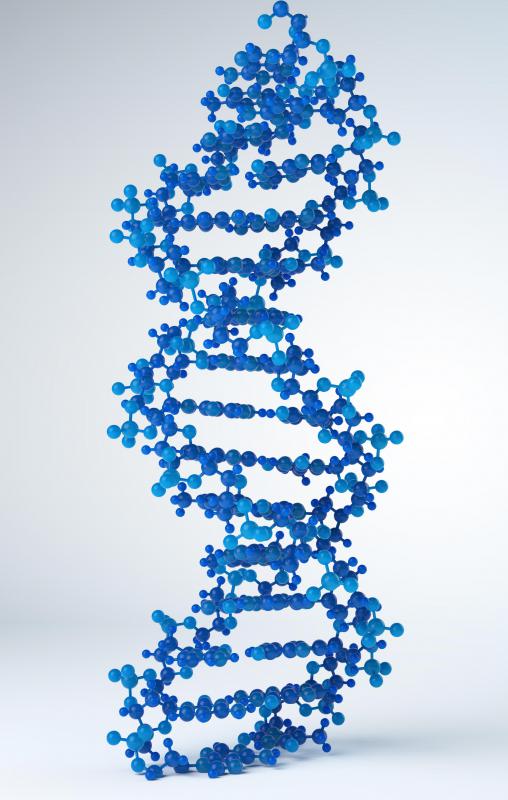At WiseGEEK, we're committed to delivering accurate, trustworthy information. Our expert-authored content is rigorously fact-checked and sourced from credible authorities. Discover how we uphold the highest standards in providing you with reliable knowledge.
What is the Relationship Between RNA and Protein?
Ribonucleic acid (RNA) is the mechanism used by cells for protein synthesis, so RNA and protein are closely related. Protein creation is the result of a transcription and translation process carried out by different types of RNA, called transfer RNA and messenger RNA. Without RNA, proteins would not be able to be created by a cell, because RNA connects the amino acids that form proteins.
Instruction blueprints for the construction of protein and RNA is contained within a cell's deoxyribonucleic acid (DNA), a large molecule with the shape of a double helix that resides in the nucleus of a cell. The actual assembly of protein occurs not in the nucleus, but in the cytoplasm of a cell. Given the size of a DNA molecule, it cannot travel out of the nucleus into the cytoplasm. Instead, RNA exists to make a copy of the DNA instructions that need to be carried out into the cytoplasm.

The DNA double helix unzips with the aid of an enzyme, exposing one side so that it can be copied. This triggers the creation of a messenger RNA molecule that then attaches itself to the open DNA and transcribes the protein creation instructions. The messenger RNA containing the DNA instructions then moves out of the nucleus into the cytoplasm. There, it attracts a ribosome, which is a cell component that functions as a workbench for RNA and protein.

While on the ribosome, the messenger RNA is positioned to attach with a transfer RNA molecule. Transfer RNA is key to the translation process that binds together RNA and protein, because it attracts a specific amino acid based on the chain of nucleotides that compose it. The amino acid is attached to the top of the transfer RNA strand.
Transfer RNA, with its bonded amino acid, directly connects to the messenger RNA on the ribosome. It does this using a set of three anticodons that match up with related codons on the messenger RNA, which ensures that the correct RNA and protein pair is created. Once the first transfer RNA is connected to the messenger RNA, it moves down the ribosome to expose the next of three codons. This allows the second transfer RNA, with its own bonded amino acid, to be matched up with the messenger RNA.
After there is more than one transfer RNA connected to the messenger RNA, the two amino acids sitting on top of each transfer RNA are positioned next to each other. These amino acids then become connected through a peptide bond, and the transfer RNA is released. This process continues, creating a chain of amino acids until the ribosome reaches the end of the messenger RNA strand. The resulting chain of amino acids formed is a polypeptide. As it leaves the ribosome, the polypeptide folds itself into the shape of a protein.
AS FEATURED ON:
AS FEATURED ON:












Discuss this Article
Post your comments